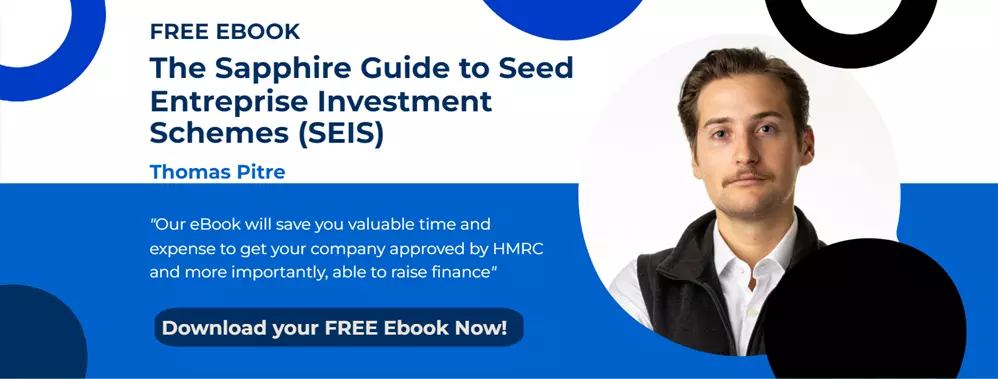 So you want to apply to HMRC for a Seed Enterprise Investment Scheme ("Seed EIS") or an Enterprise Investment Scheme ("EIS")? You have heard they are both straightforward to do. Well that is both true and false.
So you want to apply to HMRC for a Seed Enterprise Investment Scheme ("Seed EIS") or an Enterprise Investment Scheme ("EIS")? You have heard they are both straightforward to do. Well that is both true and false.
Since you are dealing with the HMRC you need to make sure you are professional about how you go about the Seed EIS or EIS application. This also applies to how you approach your potential investors. For example, approach your investors before you have applied to HMRC for EIS advance assurance and they could tell you to come back later. This could be much later as it can take up to eight weeks to get HMRC advance approval. Eight weeks later your investors could be long gone.
10 SEIS and EIS areas you should consider
Before we get started, keep in mind that every company is different and therefore every HMRC application by default is also different. However, through our years of experience of dealing with HMRC, assisting clients in drafting Information Memorandums and working with investors, we have noticed a few recurring trends and pitfalls, which you should keep in mind for the process.
1) Give yourself plenty of time to prepare & apply to HMRC, before going out to investors.
Why: Because HMRC can take up to eight weeks to process your application. Making an investor wait eight weeks for the HMRC advance approval to come through is a very long time. After eight weeks your investors could be long gone. If possible, we recommend that you obtain the HMRC advance assurance first, then approach your investors.
2) If you are a new start-up company apply for the Seed EIS and the EIS at the same time.
Why: Because you can. Many companies do not do this. You might as well have the ability to go and raise additional money via an EIS (up to £5,000,000) once you pass the £150,000 Seed EIS investment amount. We recommend you make both applications at the same time.
3) Write a professional Information Memorandum.
Why: Because since you are raising money from investors, you should make sure the risks of investing are clearly explained. You should also consider any Financial Conduct Authority implications and any disclosures regarding the money laundering regulations. We also recommend you do this before submitting to HMRC for advance assurance. If you write it after applying, you don't want to have to go back to HMRC with your Information Memorandum and possibly wait another eight weeks.
4) Properly brand and market your Information Memorandum.
Why: Because appearances matter! Don't just dont present it in Microsoft Word. Spend some time (and money) and get it properly branded by a professional graphic designer. This is the document investors will use to judge your company. Make sure it reads well and looks professional.
5) Only issue one class of ordinary shares.
Why: Because otherwise you may not get approved by HMRC. Shares must be full-risk ordinary shares, and may not be redeemable or carry preferential rights to the companys assets in the event of a winding up.
6) Do not issue shares before receiving payment for them.
Why: Because this is one of the most common reasons for investments failing to qualify under Seed EIS or EIS relief. Do not, under any circumstances, issue shares before payment is received. An example of when this mistake could happen is when shares are issued at the Companies House when the company is set up -typically this is before the bank account has even been set up.
7) Do not give too many shares (and therefore value) away.
Why: As with any investment, once you give away the shares, you will never get them back. You may need to raise additional funds in the future and will need to issue more shares.
8) Be careful regarding the Financial Conduct Authority promotion rules.
Why: There are strict rules about promotion of investments issued by the Financial Conduct Authority, so make sure you follow them. Disregard these rules at your own peril.
9) Be patient when raising capital from investors.
Why: It can take a long time to raise money in this market from investors. Being approved from HMRC for Seed EIS and / or EIS definitely will help you raise investment monies but it does not guarantee anything.
10) After HMRC advance approval, make sure you stick to your business model.
Why: HMRC after three years can (and probably will) check if you did what you said you would do as per your original Seed EIS or EIS application. If you didnt and you no longer qualify, HMRC could ask for all the tax back from investors. You definitely do not want that to happen. That would be a very difficult conversation with your investors.
Sapphire Capital Partners LLP is authorised and regulated by the Financial Conduct Authority to conduct investment business.
We assist our clients obtain finance via Seed EIS, EIS, onshore and offshore funds and preparing for an AIM or CISX listing. We specialise in helping our clients apply to HMRC for advance approval of both the Seed EIS and EIS schemes. We will also help you write the information memorandum and get it professionally branded.



